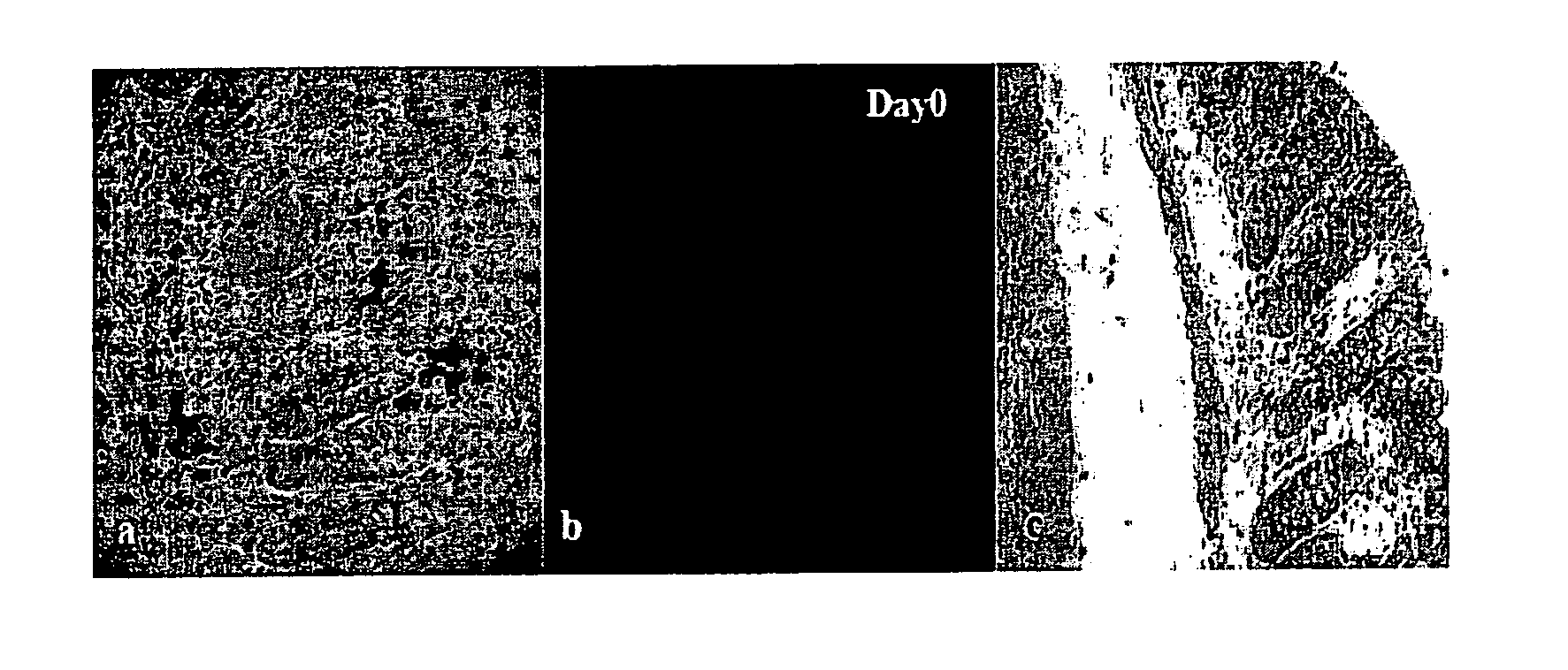Methods of Quantitatively Assessing Inflammation with Biosensing Nanoparticles
a biosensing nanoparticle and quantitative technology, applied in biochemistry apparatus and processes, instruments, library screening, etc., can solve the problems of difficult disease management, rare ibd diagnosis,
- Summary
- Abstract
- Description
- Claims
- Application Information
AI Technical Summary
Benefits of technology
Problems solved by technology
Method used
Image
Examples
experimental examples
[0102]The invention is further described in detail by reference to the following experimental examples. These examples are provided for purposes of illustration only, and are not intended to be limiting unless otherwise specified. Thus, the invention should in no way be construed as being limited to the following examples, but rather, should be construed to encompass any and all variations which become evident as a result of the teaching provided herein.
[0103]The materials and methods employed in the experiments disclosed herein are now described.
Quantum Dot Conjugation
[0104]Quantum Dots were conjugated to antibody fragments using a heterobiofunctional crosslinker 4-(maleimidomethyl)-1-cyclohexanecarboxylic acid N-hydroxysuccinimide ester (SMCC). The commercial Quantum Dots (QDs) (Invitrogen Corporation, Carlsbad, Calif.) come with —NH2 groups on their surface. These amino groups are reacted with the crosslinker SMCC to create malemide groups on the QDs surface. Antibodies of intere...
example # 1
Example# 1
DSS Induced Colitis
[0122]Colitis was induced as outlined in the materials and methods section and the induction was monitored by calculating Disease Activity Index (DAI). On Day 4 of the DSS feed animals developed colitis characterized by loose stool consistency. Blood in stools was typically detected on Day 4 in the hemoccult tests and was a consistent observation throughout the duration of the experiments. From Day 6 onwards most of the mice showed bloody diarrhea. Animals lost weight from Day 4 onward and had lost about 15% to 20% of their control weight by the end of Day 7.
[0123]The severity of colitis was assessed using an acceptable measure in the form of Disease Activity Index (DAI) (Cooper et al., 1993, Lab Invest. 69:238-49). The parameters employed in calculating DAI are based on the clinical symptoms observed in human ulcerative colitis and include weight loss, stool consistency (normal, loose, diarrhea) and presence or absence of blood in stools (hemoccult test...
experiment # 2
Imaging MPO Expression with QD565 in the DSS Model of Colitis
[0124]The DSS animal model of colitis is the most representative animal model for human ulcerative colitis. The model is characterized by the gradual induction of the disease until it is full blown. In this model neutrophil infiltration of the mucosal layer increases throughout the period of DSS feed and the crypt structure begins to noticeably deteriorate on Day 4 when the crypts start becoming shorter.
[0125]The experiment to target MPO in vivo with Quantum Dots used a 565QD-MPO antibody conjugate. Two DSS fed animals were examined per day of the experiment. The time course for each experiment ranged from Day 0 (FIG. 1; control) to Day 7.
[0126]From the H&E stained images at different time points throughout the experiment it is clear that the crypts are becoming shorter and more neutrophils appear with increased inflammation. The fluorescent images are maximum projection images. The number of QDs and their intensity marked...
PUM
| Property | Measurement | Unit |
|---|---|---|
| pH | aaaaa | aaaaa |
| sizes | aaaaa | aaaaa |
| diameter | aaaaa | aaaaa |
Abstract
Description
Claims
Application Information
 Login to View More
Login to View More - R&D Engineer
- R&D Manager
- IP Professional
- Industry Leading Data Capabilities
- Powerful AI technology
- Patent DNA Extraction
Browse by: Latest US Patents, China's latest patents, Technical Efficacy Thesaurus, Application Domain, Technology Topic, Popular Technical Reports.
© 2024 PatSnap. All rights reserved.Legal|Privacy policy|Modern Slavery Act Transparency Statement|Sitemap|About US| Contact US: help@patsnap.com










